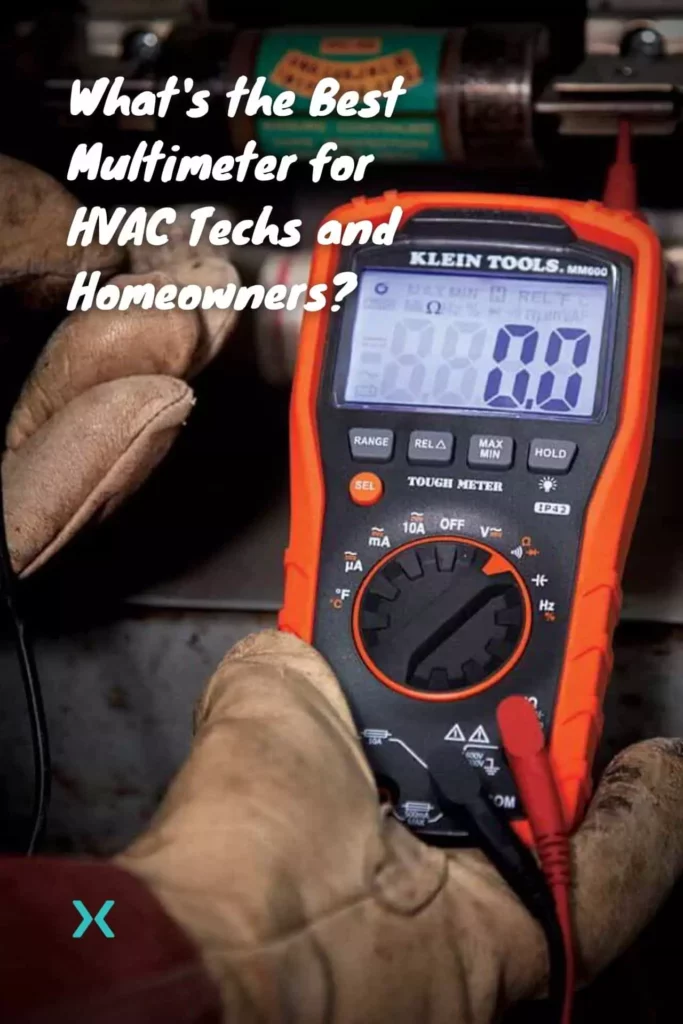The Phyxter Blog is reader-supported. Purchases made through links may earn a commission (at no cost to you). Learn More.
⭐ So, What Is the Best Multimeter for HVAC Techs?
Several companies market digital and analog multimeters for HVAC maintenance.
HVAC multimeters have features tailored to the needs of heating and cooling technicians.
These devices often come with a temperature probe with a 1000-degree range, are rugged to withstand drops, and contain attachments specifically designed to work with electrical components on heating and cooling systems.
Some have a stand to allow hands-free operation.
Some can measure small voltages—thousandths of a volt—used by thermostats and other components in heating systems that use natural gas as their primary source of energy.
A multimeter can be useful for measuring the basic functionality of electronic devices, such as thermostats, electric heaters, air conditioner motors, and compressors.
For example, if you believe that a non-functioning furnace has a broken circuit board, you could test whether the circuit board is drawing power as it should.
The multimeter’s readings can detect signs of a loose, cut, or burned-out wire and test electronic circuits for shorts and breaks that could be dangerous.
More subtle variations in power level could indicate an unexplained power drain.
Table of Contents
⭐ Things to Consider When Choosing the Best Multimeter
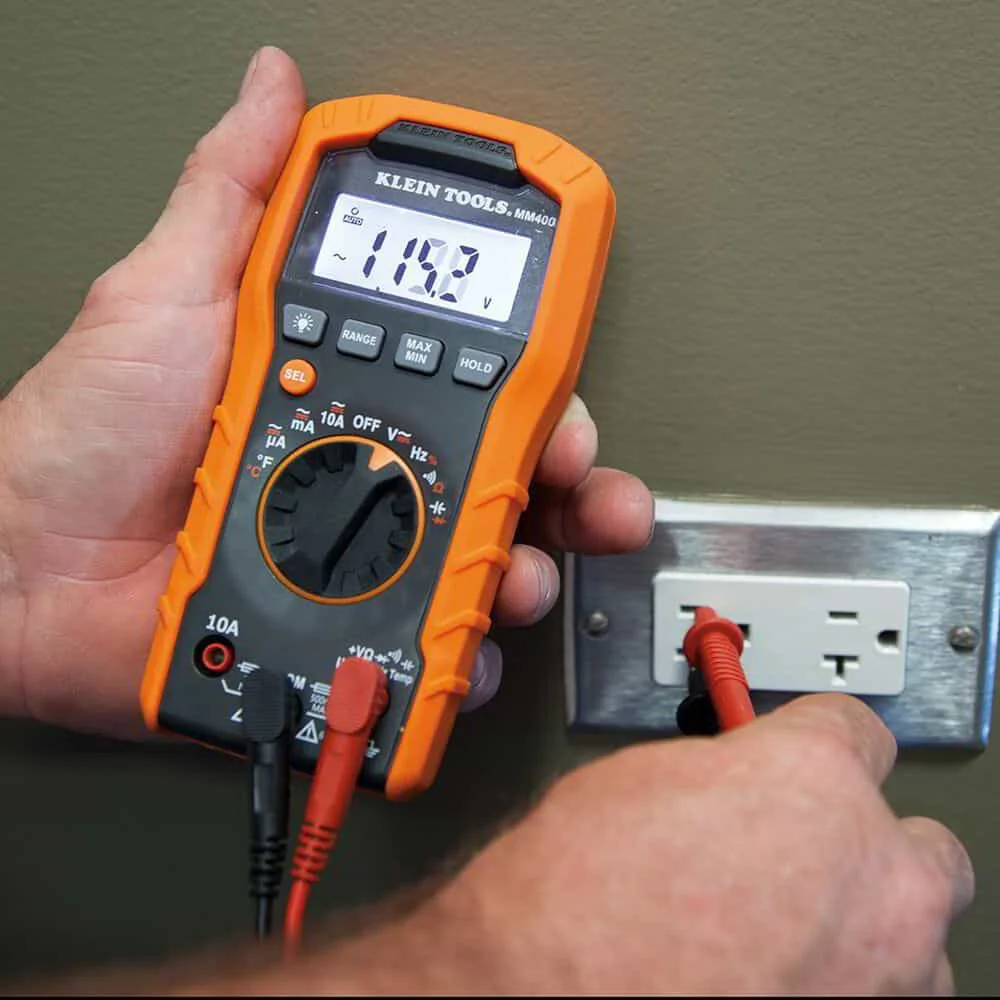
Many multimeters are available on the market today, ranging from traditional basic analog multimeter models to advanced digital multimeters with bells and whistles.
The question of which is best likely has no single answer.
Everyone has their preferences, and some contractors find that different digital multimeters prove better fits for particular jobs.
However. in this article, we review the important features of several of the best multimeters to clarify their differences.
We aim to help you find the one that best suits your work style and the needs of your current project.
⭐ Basic and Advanced Functions of Digital Multimeters
Voltage refers to the difference in electrical charge between two points.
For example, a difference could exist between the power source in a circuit and a wire at another point in the circuit.
The difference in charge exerts a force on charged particles because, like charges repel one another.
You could think of voltage as a form of potential energy.
Consider an electron exposed to high voltage as a ball at the top of a steep hill or a fluid under high pressure.
If it is free to move, it will move in the direction of a positive charge. The unit of measurement for voltage is, not surprisingly, the volt.
Exposure to high voltage can be dangerous for humans and for electronic equipment.
Some multimeters use non-contact voltage measurements, where only a small amount of electrical current is used for the measurement to protect the device.
If electrons exposed to voltage are free to move, they will.
The coherent motion of electrons is called an electric current, and its unit of measurement is the ampere or amp.
We will discuss the two types of current, AC current and DC current, later in the review.
⚡ Measuring Voltage and Current
In order to assess circuits fully, a digital or analog multimeter must be able to measure AC voltage, AC current, DC voltage, and DC current.
If electrons cannot move within a circuit, then a voltage potential will be unable to generate as strong a current. Resistance refers to the ability of a circuit to impede the flow of electrons.
The relationship between voltage, current, and resistance is expressed through Ohm’s Law, V-IR.
For a given voltage, as resistance increases, current decreases.
Multimeters that measure these three qualities are known as Volt OHM milliammeter or Volt Ohm Meter (VOM) devices.
A VOM should do more than just measure electrical current, voltage, and resistance to be competitive in the market.
Manufacturers offer a variety of digital devices and qualities. We summarize some of the more important multimeter features below.
Not every multimeter has these features, but those that have them are better positioned to capture the title of Best Multimeter.
Consider each one, and ask yourself if it’s essential, irrelevant, or something useful but not necessary.
⚡ Analog Versus Digital Display
An analog multimeter remains the more traditional form of a multimeter.
These analog meters convert the voltage, amperage, or resistance into the rotation of a dial, similar to the speedometer in a car.
They cost less and can detect voltage and current from the power source itself.
For some measurements, analog multimeters offer more accurate readings than their digital counterparts.
A digital multimeter typically has an LCD display and uses a computer to carry out measurements.
The computer adds to the cost and requires batteries, but it can perform more complex computations, such as true RMS AC current measurement.
Given that a digital multimeter depends on batteries, long battery life is a definite plus, as is an auto power shutoff.
We did not include analog multimeters in this review.
We do not mean to say that an analog meter doesn’t have a place in residential and commercial contract work, including HVAC maintenance.
However, the best multimeters available today have digital displays.
⚡ Auto Ranging
If you do not know beforehand what range of values you expect for voltage, current, or resistance, you might have to hunt around to find the settings that allow the multimeter to accurately detect the quantity you need to measure.
An Auto-ranging multimeter will do this for you, saving you the time and frustration of discovering the optimal voltage range for each measurement task.
The auto-range function saves time and improves the accuracy of measurement.
Not all digital meters have the auto-range capability, but a quality digital meter suitable for professional use should automatically set the correct range.
⚡ Probes and Accessories
To conduct electrical measurements, a probe needs to contact the wires or other conductive materials, aside from non-contact measurements.
Specialized probes can detect many characteristics such as temperature, capacitance, frequency, duty cycle, in addition to voltage, current, and resistance.
Some multimeters come with carrying cases, stands for hands-free operation, batteries, and chargers.
They may also come with holders for leads and probes and alligator clips for some connections.
⚡ Temperature
Some applications for multimeters do not require a temperature sensor, but it is invaluable for HVAC technicians.
If you use a multimeter for heating and air conditioning work, you should make sure that it can detect temperature up to a high enough value to inspect a furnace.
Most multimeters that measure temperature can do so up to 1000 degrees Fahrenheit or 537 Celsius for our metric friends.
You may have to use a specialized temperature probe capable of withstanding heat within the temperature range of the digital multimeter for measurements.
✅ Our Top Picks!
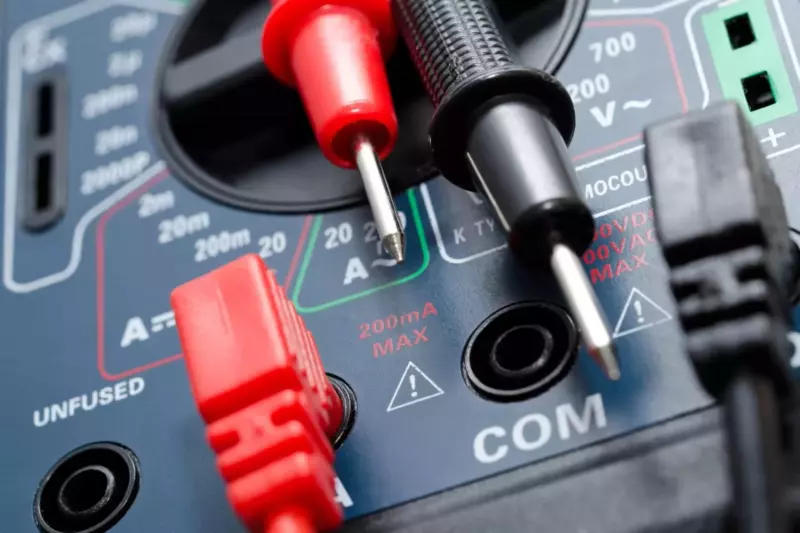
Each multimeter will do the basic job of measuring voltage, amperage, and resistance. Many others, particularly digital models, have more features.
In our evaluation of these models, we will focus on qualities that bear directly to their functionality—namely precision measurement, reliability, durability, ease of use, auto range, and battery life.
For other features, we will consider them to the extent that they relate to HVAC maintenance and repair tasks.
We will address two key questions:
Is the model a quality multimeter?
Does it contain features that today’s contractors and home improvement enthusiasts want and need?
Cost is a consideration, but buying a cheap multimeter will not do you much good if it does not take accurate measurements.
We selected a variety of brands and models, prioritizing brands that have achieved national attention.
The models and makes included in this article reflect the diversity of the multimeter as a tool.
We included digital multimeters, HVAC multimeters, and multimeters for general use.
In preparing this review of the best multimeters, we did not investigate every multimeter or every multimeter manufacturer.
We might have missed a multimeter with unique features that perfectly suit your work.
We hope that this review is informative and helps you choose the tools for your workshop, tool belt, or van.
However, we would also encourage you to continue to explore options online and investigate the latest developments in multimeter technology.
While this article is not exhaustive, nor should it be, we hope that it serves as a springboard to a deeper understanding of the value of the multimeter and its role in the heating/cooling service industry.
1. Klein Tools MM600 Auto Ranging Multimeter
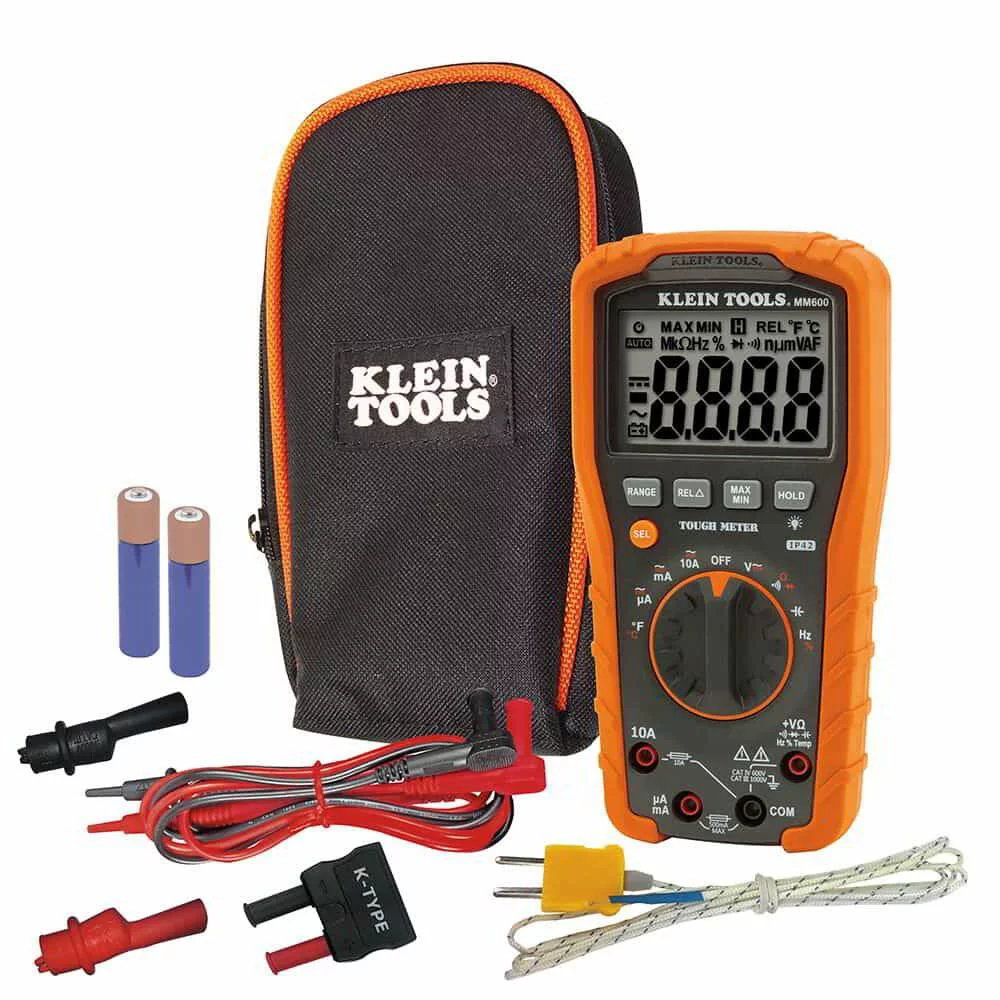
This multimeter does the basic tasks we would expect from a multimeter—AC/DC measurement of voltage and current.
Its voltage range is up to 1000V with an auto-range function for voltage within that range. It measures current up to 10 amps.
For AC current, it calculated true RMS current. It tests for temperature and continuity and has special settings for testing diodes.
The MM600 has a bright orange case and a large backlit display with large and easy-to-read numbers. Its dial is clearly labeled and easy to use.
The impact-resistant MM600 model can withstand drops of up to six feet.
All things considered, the MM600 is a capable multimeter with features that will make life easier for HVAC technicians.
Between the backlit screen and visible orange coloring, you can be confident that you won’t lose track of the MM600 in crawl spaces, cluttered garages, and other dark and cramped places.
2. Fluke 179 True-RMS Digital Multimeter
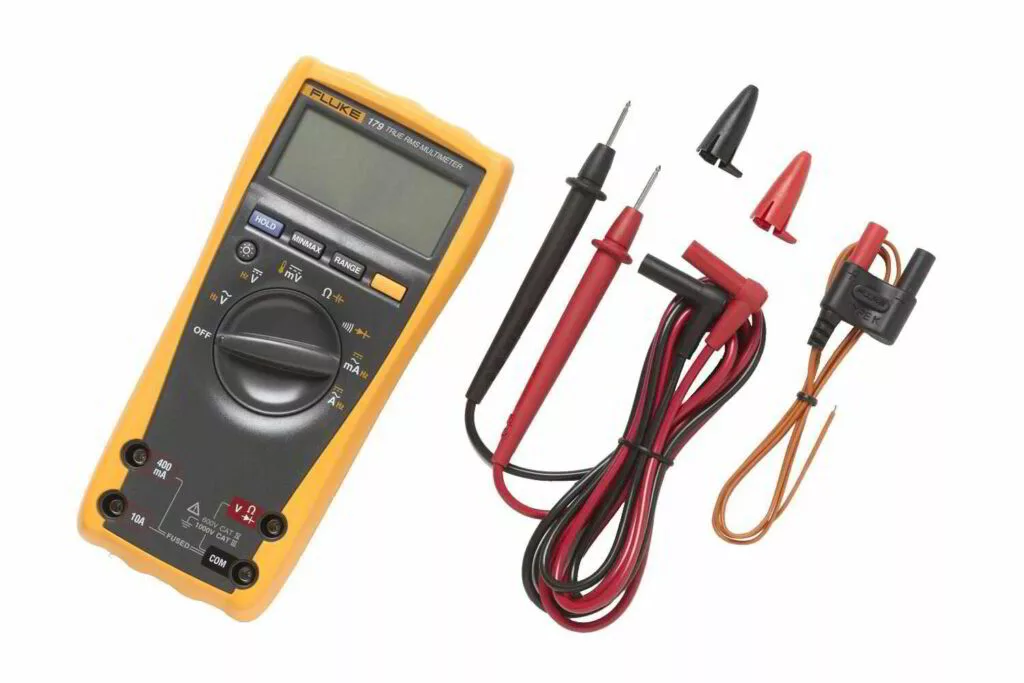
Many online lists of the best digital multimeters include Fluke multimeters, so we would be remiss not to see how one of Fluke’s flagship models stacks up against the rest of the field.
The Fluke 179 measures DC and AC voltages, as we would expect from a Fluke digital multimeter.
The fluke multimeter prevents high input impedance to eliminate an artifact known as ghost voltage.
The Fluke 179 also has the usual slate of convenient functions and the auto-range function and true RMS calculation.
The Fluke 179 rises near the top digital meter of the field with a product that includes everything that we would want to see in a digital multimeter.
Its temperature sensor tops out at 752 degrees Fahrenheit, a shade lower than in some other multimeters.
Aside from the temperature sensor and microvolt sensors, it is unclear what makes this product an HVAC multimeter.
3. Fieldpiece LT17A Digital Multimeter
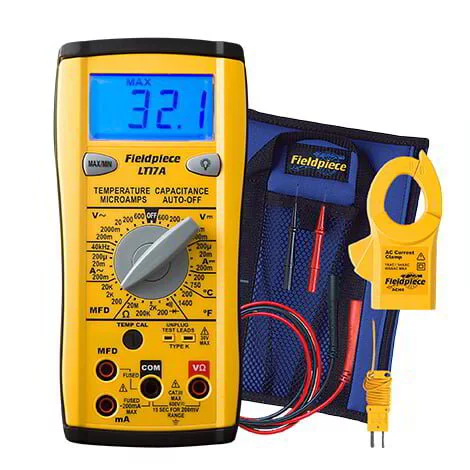
Like the Klein Tools MM600, the Fieldpiece LT17A is built with visibility in mind, sporting a bright yellow case. It has a bright blue backlit screen and a magnetic hanger.
The Fieldpiece LT17A has a host of multimeter features that would appeal to HVAC technicians.
It includes microvolt testing for flame diodes (components of a pilot light system) and measures temperatures up to 1400 degrees Fahrenheit.
It includes many computational features that you would expect from a digital HVAC multimeter, such as auto-ranging capability and true RMS current calculation. It also detects high voltage and continuity.
The overall feel of the Fieldpiece is that of a product designed with HVAC technicians in mind.
4. Milwaukee Digital Multimeter 2216-20
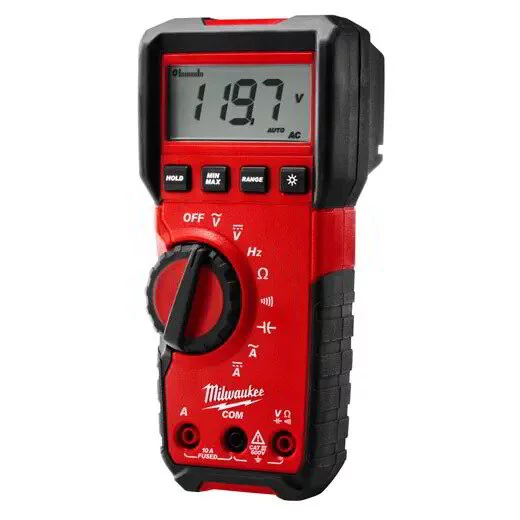
The Milwaukee Digital Multimeter 2216-20 stands out as a compact and sturdy multimeter for industrial use.
It measures AC and DC voltage up to 600V, current up to 10 amps, capacitance up to 1000 microfarads, and resistance up to 40 Mohms.
The Milwaukee digital multimeter has a rugged case to protect the multimeter from drops and other sources of damage.
5. UEi True RMS 1000V HVAC/R Multimeter w/ Temperature DM515
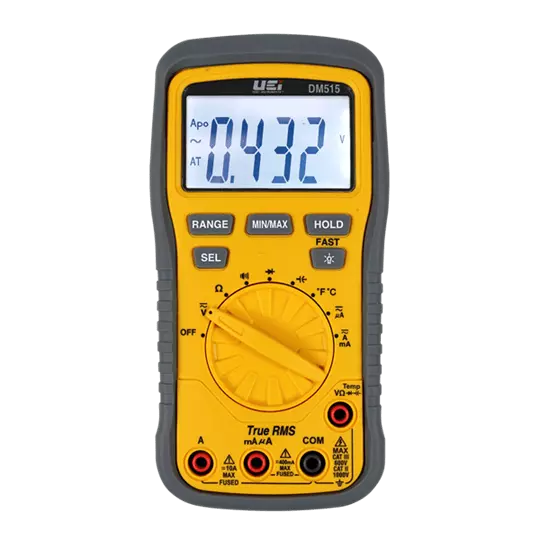
The UEi True RMS 1000V HVAC/R Multimeter has a similar slate of features as in other digital multimeters.
It measures voltage up to 1000V, current up to 10 amps, and capacitance up to 999 microfarads.
This multimeter stands out from the field in temperature range, capable of measuring temperatures up to 1112 degrees Fahrenheit. Alternating current is computed using true RMS technology.
Other features of interest to HVAC technicians include milliamp and microamp detection, diode testing functions, and an audible continuity warning to check for short circuits.
It features a bright yellow surface and a clear, large digital display. Other convenient features include an auto shut off feature and a low battery indicator light.
It comes with a rubber boot to protect it from harsh conditions and a kickstand for hands-free support.
⭐ What’s The Final Verdict?
After considering both the advantages and disadvantages of each model, the Klein Tools MM600 stood out.
In addition to its core functions of measuring voltage and current in AC and DC circuits and measuring temperature.
It is an auto-ranging digital multimeter with more features than the other contenders and arguably the best digital multimeter.
Its clear, backlit LCD display, auto-ranging capability, temperature range up to 2000 degrees Fahrenheit, and bar graph interface stand out from many of its competitors.
Its price at most retail stores is reasonable considering its features.
It is a budget multimeter with high-end features suitable for professional work in HVAC maintenance and other fields.
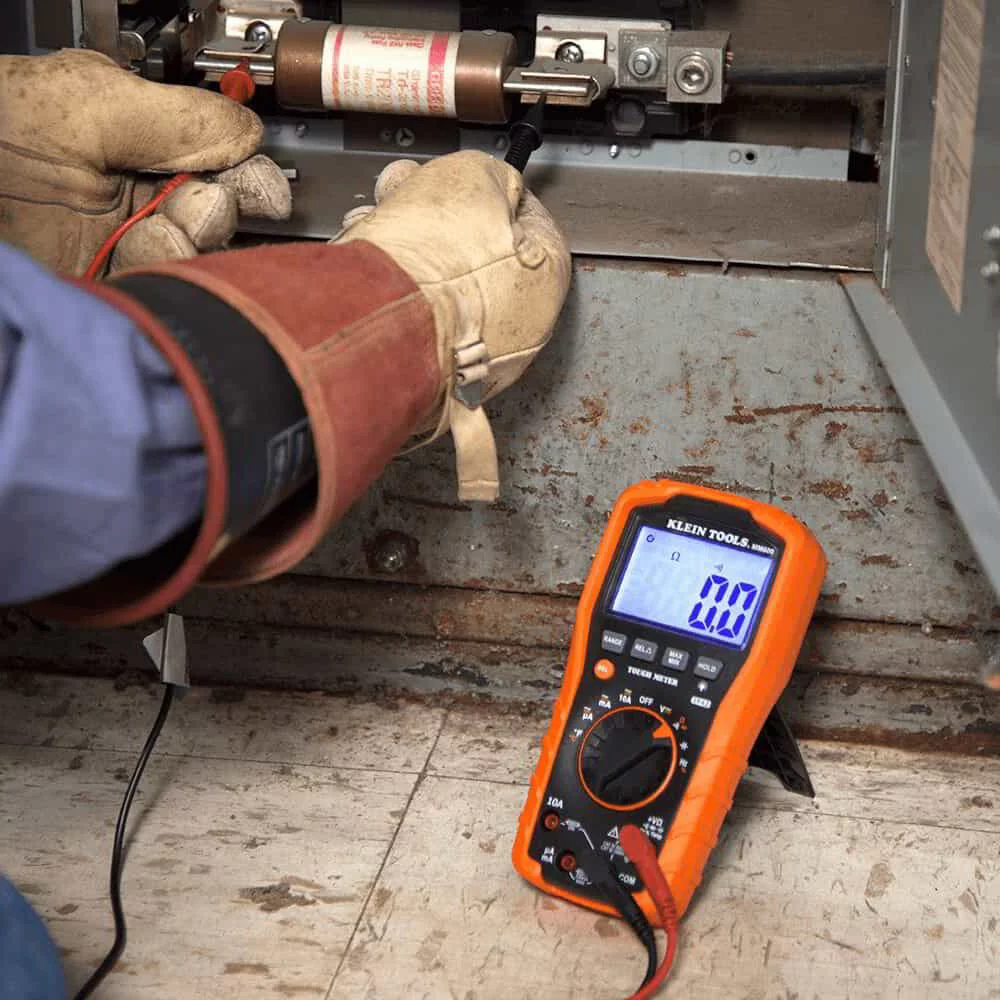
Honorable mentions go to the Fluke 179 and the Fieldpiece LT17A.
They were both digital meters with a wealth of convenient features that offer accurate readings.
Both products come from companies with a reputation for quality manufacture.
Klein Tools edged them out by adding just a few extra features.
Each of these products was capable of the core functions of a multimeter.
It will measure DC current, AC current, DC voltage, and AC voltage from electrical devices.
The best digital multimeter must do more than measure voltage.
They must support the work of an HVAC technician or other professional contractor.
They must have unparalleled customer service as well as the automated performance of tasks that reduce the contractor’s workload.
These qualities improve the working conditions of the technicians in ways that go beyond the narrow performance of the task.
The features that we focused on in our list are not the only ones that matter.
The best multimeter is out there, possibly among the list that we reviewed.
Before buying a multimeter, carry out an assessment of your own needs and the needs of your business and repair staff if you are a contractor who depends on a hired crew.
Lastly, consider the reputation of the company that manufactures the multimeters you may purchase.
Look for company reviews on Yelp and similar sites.
Multimeters, like any other complex device, sometimes malfunction.
Buying a multimeter from a company you trust allows you to tackle your projects with confidence.
For us, the best HVAC multimeter out there is the Klein MM600 Multimeter.
⭐ Multimeter Basics—Everything You Need to Know
A basic multimeter measures different electrical quantities, particularly voltage, current, and resistance.
The ability to measure these values with one tool at the touch of a button or by turning a dial is an advantage for professional contractors and Do-It-Yourselfers alike.
A multimeter is an indispensable tool for electrical work.
Both digital and analog meters have many uses for DIY projects and professional repair or maintenance jobs.
They can determine if a piece of equipment is not working properly or not receiving sufficient power.
They can check that circuit breakers have tripped and that power is not flowing through the wires before electrical work can begin.
An Automotive multimeter is designed to measure electrical current and voltage in the car’s electrical system.
⚡ Finding Hot Wires
Naturally, before doing electrical work, it is prudent to make sure to disconnect the power to the device that you will be working on.
A multimeter can give you peace of mind by verifying that the device is not drawing power.
Many digital multimeters are also non-contact voltage testers, which means that they can detect current in a live wire without bringing the multimeter into direct contact with the wire.
⚡ Testing Batteries
A multimeter can check the power of batteries in the same way that it detects the current in a circuit.
Battery testing could help an HVAC technician rule out dead batteries as the cause of a failure of a remote control or other battery-powered device associated with the HVAC system.
⚡ Testing Other Electrical Components
Any time an electrical appliance, light fixture, or other device goes dead without an obvious cause, it raises the question of whether the device has failed or simply lost power.
Often a first step toward identifying the problem is to discover whether an electric current is still flowing through the device.
A multimeter can help a technician distinguish between mechanical problems and electrical ones, particularly damage to wiring or short circuits.
When maintaining air conditioners and heating systems, there will be many times when you have to crawl or climb into dark spaces where a digital multimeter could be hard to read.
A large LCD display will increase the ability to read values at a glance.
A backlit display allows you to keep an eye on readouts even in situations with no ambient light.
In addition to the display, the controls and the setting indicators should be clear and easy to read.
⚡ The Terminology—AC and DC
Power to the home or commercial properties is provided via alternating current to facilitate energy transmission.
However, most household appliances use direct or DC current.
A multimeter must be capable of AC/DC voltage measurement to measure power from the power grid as well as power being used within circuit boards and appliances.
Measuring current differs for AC and DC voltage.
Direct current consists of a constant flow of electrons, which is easy to calculate.
Alternating current changes, so calculating the overall voltage takes some computation.
One type of multimeter, the true RMS Digital multimeter, uses a root mean square calculation for more accurate measurements of alternating current.
⚡ The Symbols on a Multimeter
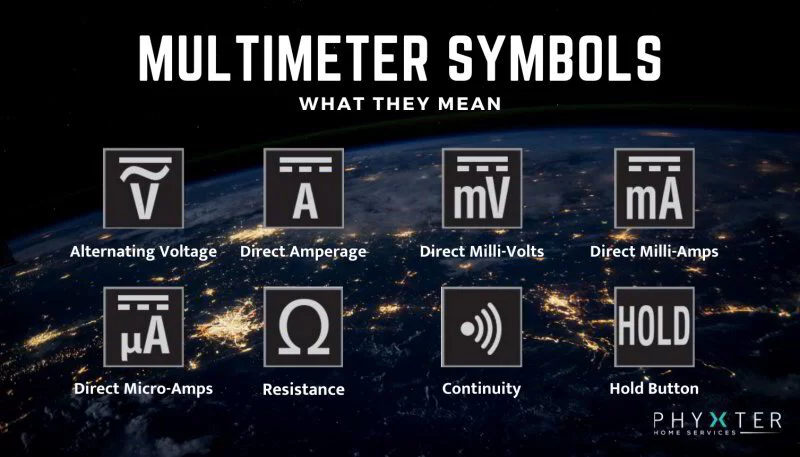
A key component of a multimeter is the set of two probes.
The probes are part of the test leads, which include clips for attaching the leads, a cable connecting back to the multimeter.
When you set them to two points, the multimeter will indicate, depending on its setting, the AC/DC voltage, current, and resistance.
Usually, the user indicates the desired setting by turning a dial.
A conventional VOM multimeter has either a dial for an analog device or an LED or LCD display and buttons.
The user can select which quantity to measure by turning the dial or pressing buttons on the multimeter’s face.
The symbols on a multimeter might be a bit esoteric, but they are simple once you get used to them.
💡 A V with a curved line above it indicates voltage with alternating current.
💡 A V with straight lines above it indicates voltage in a direct current circuit.
💡 An A with a curve above it indicates measuring current for alternating current, while an A with a straight line above it indicates DC current.
💡 An Omega symbol (Ω) indicates a measurement of resistance. The Greek letter omega (Ω) is the symbol for Ohms, the unit of resistance.
💡 A symbol with radiating concentric lines, which often indicates speaker sounds in other devices, in this case, indicates continuity or that a complete circuit has been formed.
In some situations, this could mean a short circuit, so many multimeters produce a beep when continuity occurs.
The multimeter has three jacks. A red current lead, indicated with an A, is used for current tests and is where the red lead plugs in.
The other red jack is simply called the red jack and is used for the red lead for all tests except current.
The common jack is black and indicated with the letters COM. It is used for all tests.
⚡ Other Features
You will also see other multimeter features.
The HOLD button records a reading so that you don’t have to look at the display while you are setting the probes.
The continuity button tells you whether the multimeter has completed a circuit, which is important for detecting faulty wiring.
An auto shut-off feature helps to conserve energy.
⭐Advanced Features
⚡ Overload Protection
When working with electrical wires and high voltages, there are risks to the person doing the job and the multimeter itself.
It may have an overload protection system that cuts power during an unexpected power surge or exposure to dangerously high electrical current.
Some multimeters are designed to shut down whenever voltage or current reaches a critical level
⚡ Diode Testing
A diode is an electrical component that allows current to move in one direction but not the other in a circuit.
The AC diode in air conditioning units prevents current from going the wrong way and damaging electrical equipment within the AC system.
A multimeter can test the diodes as part of scheduled HVAC maintenance.
⚡ Millivolt Measurement
Devices that run on natural gas, such as a gas-powered furnace, use very little electrical power.
Multimeters must be able to detect small electrical currents in the millivolt range for AC/DC voltage.
For this reason, it is a good idea to make sure that your HVAC multimeter has a millivolt setting.
⚡ Specialized Multimeters
Some multimeters are designed for specific types of work, including automotive multimeters and HVAC multimeters.
The multimeter features in these models are more narrowly tailored to a particular set of job tasks.
Among these, some of them are smart multimeters, which can connect with other apps and diagnostic software.
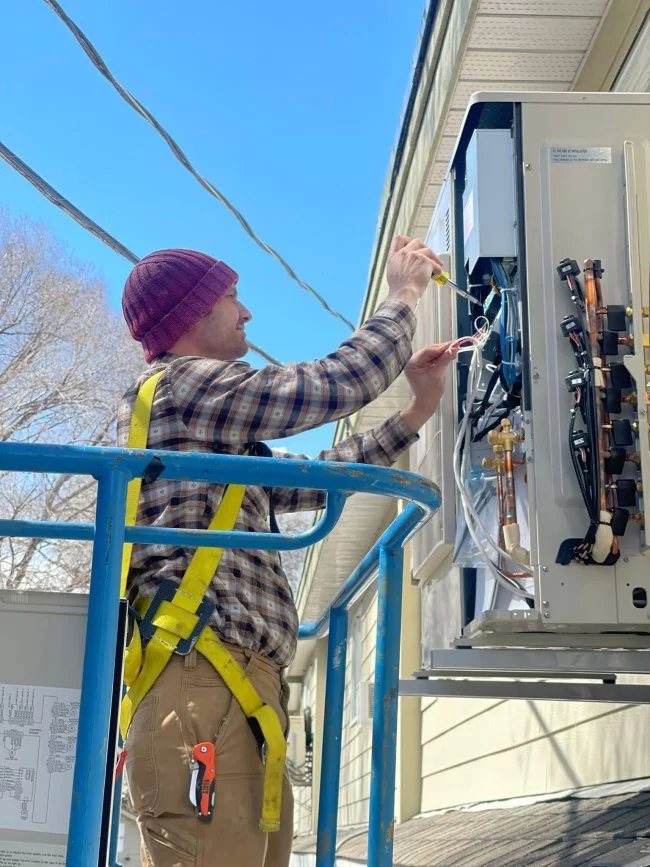
⭐ Conclusion
We hope that our review of digital multimeters specialized for use by HVAC contractors has helped you appreciate the multimeter’s importance and has given you a practical understanding of how to operate the device.
It is important that you approach the task of HVAC repair and maintenance with the right tools for the job.

